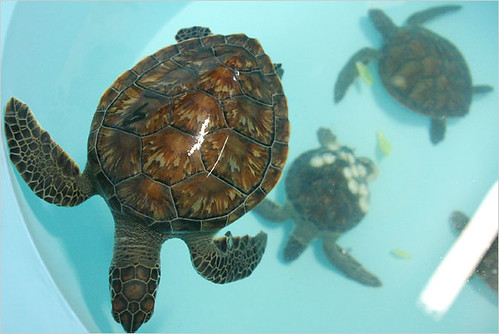At least three dozen juvenile sea turtles were rescued from an arctic blast that caused the water temperature in a part of the Gulf of Mexico off South Padre Bay, Texas, to fall 18 degrees in 48 hours.
Turtles are air-breathing cold-blooded animals, meaning that they cannot generate their own body heat, so they were rendered comatose by the rapid temperature drop this week in the shallow bay where they were feeding. Animal rescuers feared that the cold would kill the turtles or make them so sluggish that they would be vulnerable to shark attacks.
Volunteers and others scooped them up from the surf, bundled them in blankets and towels and took them to the privately run Sea Turtle Inc., rescue center and a University of Texas marine laboratory.
The rescuers scrubbed the green turtles clean and put them under a heat lamp until their eyes opened and their flippers twitched, signs that they were recovering and ready to be put in holding tanks where the water temperature was 66 to 68 degrees.
Green sea turtles, Chelonia mydas, are reptiles whose ancestors evolved on land and returned to live in the sea approximately 150 million years ago. They are one of the few species that are so ancient that they witnessed the dinosaurs evolve and then become extinct. Adult green sea turtles, which grow a length of 1.3 meters (4 feet) and weigh between 113-204 kilograms (250-450 pounds), are herbivores, meaning that they eat only plants. Juvenile green sea turtles are carnivorous; their diet consisting of jellyfish and other invertebrates.
There were once several million green sea turtles worldwide but hunting and fishing nets, along with coastal habitat degradation and disease have reduced their numbers to fewer than 200,000 nesting females. This species is listed endangered by the Convention for International Trade of Endangered Species of wild fauna and flora, or CITES.
Sources:
Cited story and image.
Information about green sea turtles.
.

